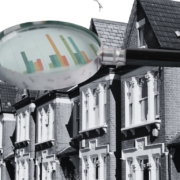There’s been plenty of discussion about the UK’s long-term economic recovery from the COVID-19 pandemic. While the government has adopted an optimistic tone, enacting policies to encourage consumer spending, create new job opportunities and stimulate investment activity, the markets have been naturally hesitant.
This isn’t surprising. Afterall, if the first half of 2020 has taught us anything, it’s understanding that in the future, there are no certainties.
At the moment, there are two pressing concerns on the minds of investors. The first is whether the COVID-19 pandemic has been contained. While we could see a rise in cases as lockdown measures are eased, the fear is that it could result in the reintroduction of social distancing. The second concern is more complicated and has to do with the UK’s ability to bounce back from the economic downturn it has experienced as a result of the pandemic.
The UK economy grew by 1.8% in May, representing its largest month-on-month rise in seven years. However, there are concerns that this growth could drop as the economy adjusts to the direct and indirect implications of COVID-19.
Thankfully, the UK government has taken an active approach. The announcement of a Stamp Duty holiday by Chancellor Rishi Sunak in early July was positive news and will no doubt release much of the initial pent-up buyer demand for UK property. Estate agencies have reported an increase in enquiries, and there is expected to be a wave of new property transactions as a result.
The big question, however, is whether this momentum initially unlocked by the Stamp Duty holiday can be maintained until it ends on 31st March. One of the factors that will determine this will be buyer confidence. Afterall, the primary aim of the government is to encourage prospective buyers to once again return to the market.
Instilling Buyer Confidence
When lockdown measures were first announced, the majority of mortgage lenders decided to retreat from the market by either not accepting new applications or removing products entirely from the shelf. Suddenly, transactions in the process of being completed were now at risk of collapsing.
As a result, buyers and brokers sought out financial options beyond those on offer on the high street. These included specialist finance options, like bridging loans. With specialist finance lenders quickly adapting to lockdown, there was a subsequent surge in buyer demand for bridging loans.
With social distancing measures now easing, the high street lenders who initially retreated are slowing making their return. 90% LTV products are slowly coming back on the market. However, the process of getting a mortgage will be marred with complexity.
To minimise their risk exposure, banks will no doubt be taking longer to process applications and will also adhere to stringent lending criteria. For the buyer, this could equate to unforeseen delays in getting a mortgage deployed and ultimately result in the transaction collapsing.
That’s why I anticipate another surge in interest for specialist finance during the Stamp Duty holiday. After all, bridging loans are a fast and flexible form of finance that can be deployed within days of the initial enquiry being received.
The Stamp Duty holiday is a positive step in the right direction, but more action should be taken in the coming months to maintain momentum. Lenders also need to play their part. Only by creating a market willing to facilitate the needs of homebuyers in this current period of uncertainty will homebuyers have the confidence to once again invest in bricks and mortar.
Paresh Raja is the CEO of Market Financial Solutions.






















Comments